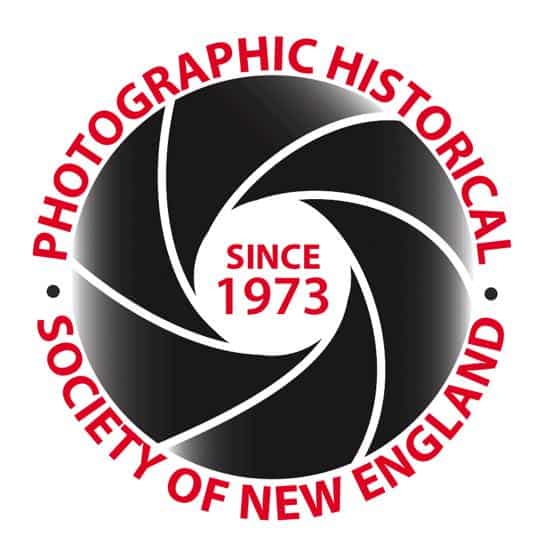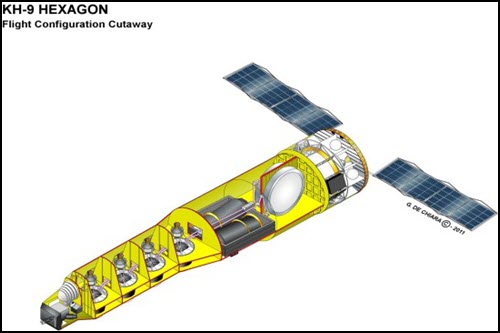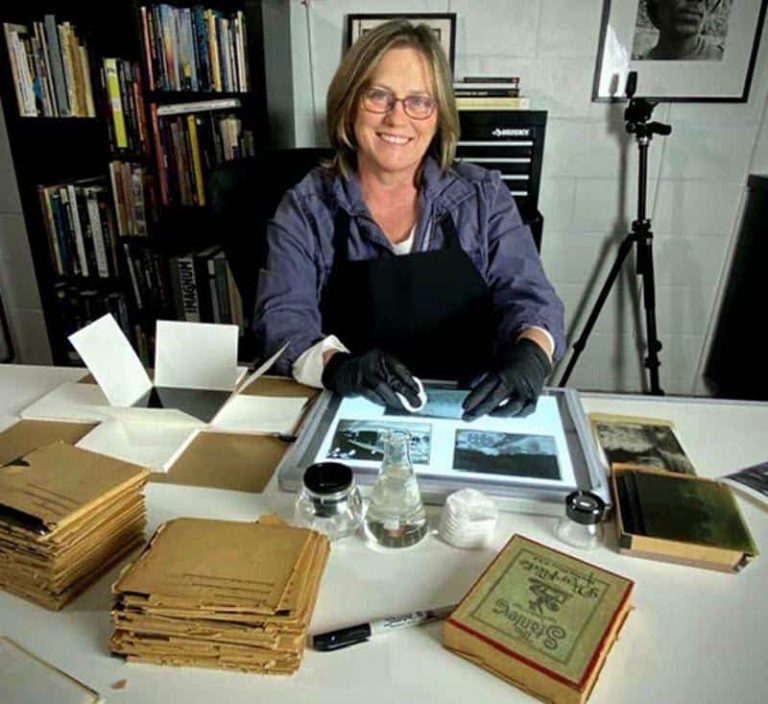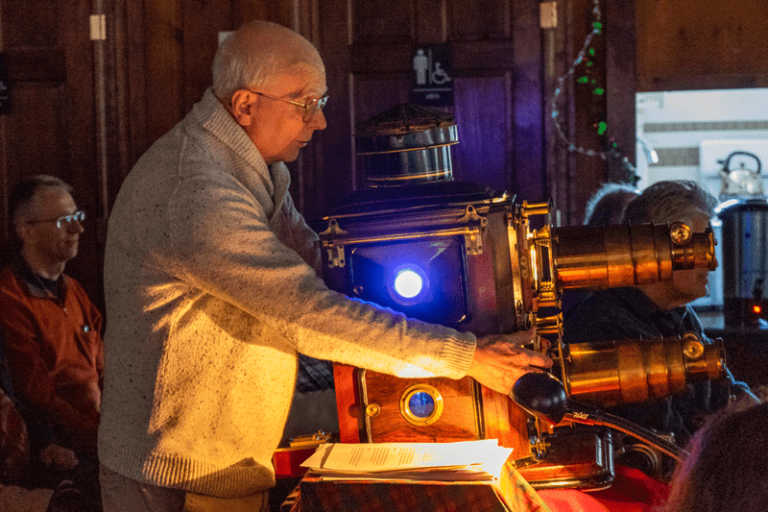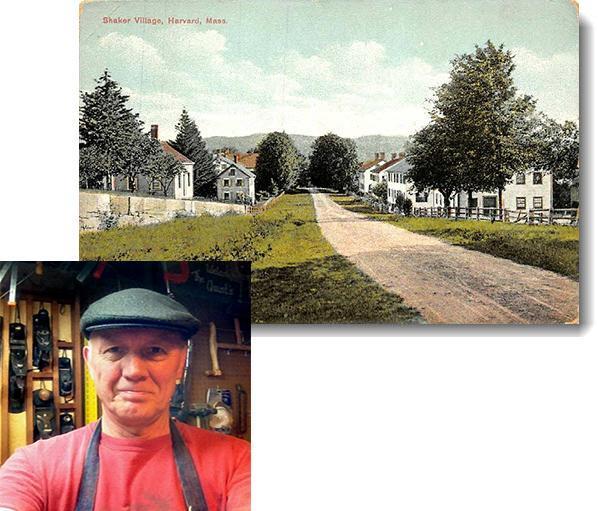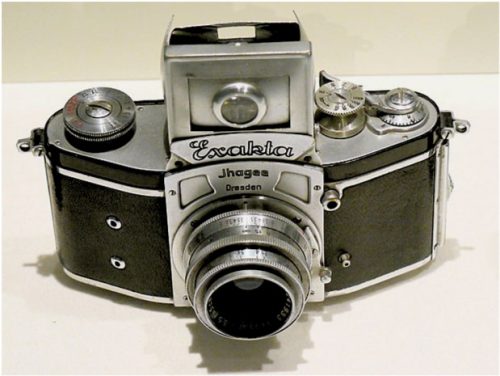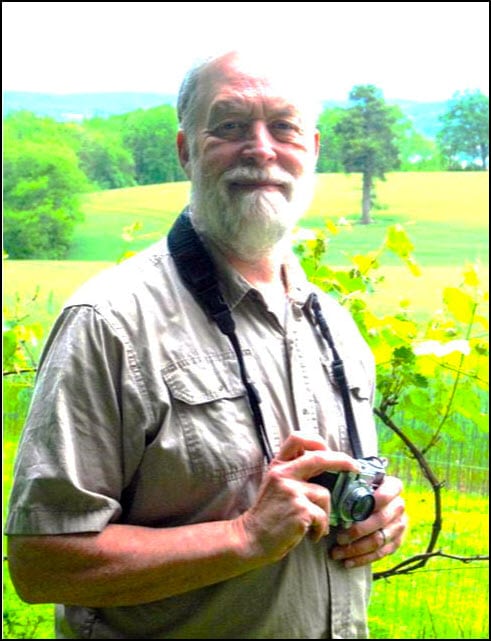Philip Pressel was the project engineer in charge of the design of the formerly top-secret Hexagon KH-9 spy satellite’s stereo cameras. His live Zoom presentation on Sunday, May 1, 2022 will expand on and answer questions about his recent 2021 PHSNE Journal article. The Hexagon KH-9 was the last film-based spy satellite, and it helped keep the peace during the Cold War from 1971 to 1986. It was responsible for President Nixon signing the SALT treaty and allowed President Reagan to say, “trust but verify.” The presentation will include some photographs that the KH-9 system took of Russian assets and of cities in the US. KH-9 in-flight configuration cutaway illustration (above)
Pressel will explain how this stereo camera system worked in perfect synchronization, with 30 miles of film for each camera moving at 200 inches per second linearly and in rotation. This satellite was and still is considered the most complicated satellite ever put in orbit, one of America’s best and most successful spy satellites.
Philip Pressel pointing to the KH-9’s camera bay at the National Museum of the USAF, Dayton, OH (below)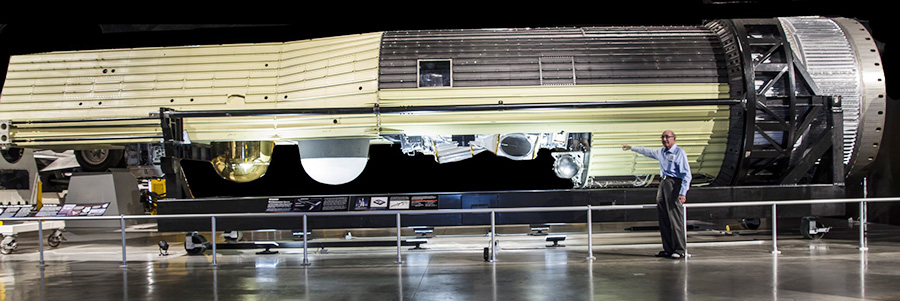
There were nineteen launches from Vandenberg AFB in polar orbits at altitudes from 90 to 140 miles; the CIA ran the first in 1971, then turned the program over to the Air Force in 1972. Pressel retired after nearly 50 years working in the aerospace industry, including 30 years at Perkin-Elmer Corporation in Danbury, Connecticut, a key contractor to the CIA for the KH-9 project.
Since the Hexagon program was declassified in September 2011, Pressel has lectured on the Hexagon program to many national technical organizations and museums, including the National Museum of the USAF at Wright-Patterson AFB in Dayton, Ohio (where the last remaining Hexagon vehicle is on display), at the Smithsonian Air & Space Museum, and at the Spy Museum in Washington, DC.
Pressel wrote “Meeting the Challenge: The Hexagon KH-9 Reconnaissance Satellite,” a book on the importance of the Hexagon program to United States security; he describes in detail, with accompanying drawings and photographs, how the system actually worked. His blog about Hexagon can be accessed at www.hexagonkh9.com.
Sunday’s Zoom meeting will bring both the not-so-distant past and the very real present together, featuring a presenter steeped in the role satellite reconnaissance plays in peace and war. Don’t miss this meeting!
Visit PHSNE Virtual-Meetings on YouTube for more Zoom photo history presentations.
What the heck…
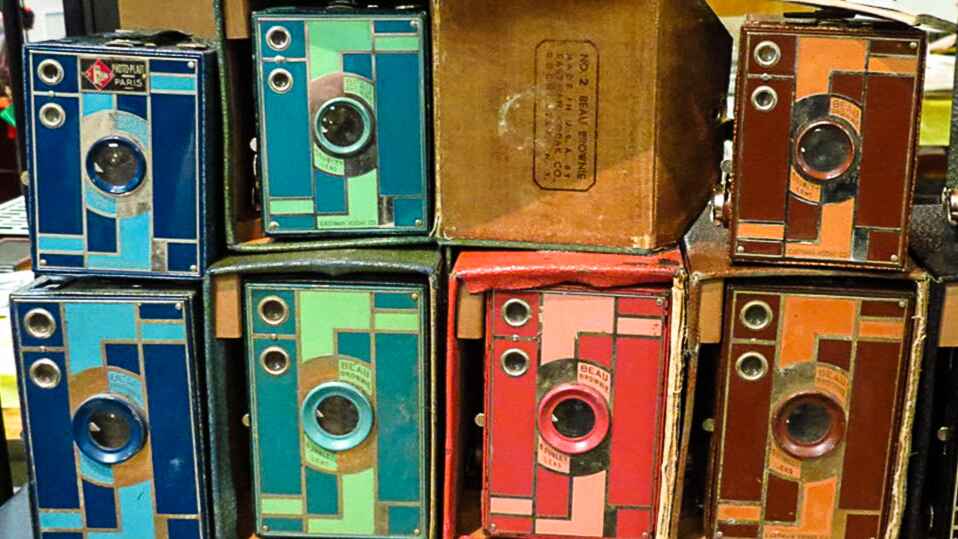
Are Those Even Cameras?!
Join the PHSNE Newsletter and learn more about photographic history and preservation. Already an expert? Come and share your collections and knowledge as we celebrate the history and advancement of photography.
